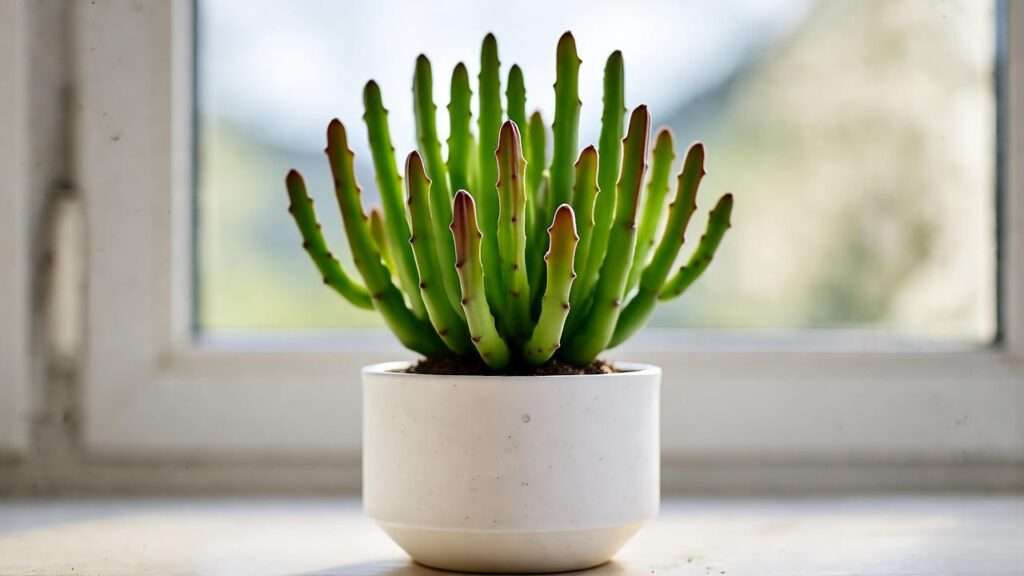Imagine a plant so striking it transforms your space into a desert oasis, yet so low-maintenance it thrives on minimal care. Enter the pencil cactus plant (Euphorbia tirucalli), a succulent that’s as easy to grow as it is eye-catching. Whether you’re a seasoned plant parent or a beginner, this guide will equip you with expert-backed tips to keep your pencil cactus vibrant and healthy. From watering schedules to handling its toxic sap, we’ll cover everything you need to know to ensure your firestick plant flourishes. Ready to dive into the world of succulent care? Let’s grow! 🌿
As a horticulturist with over a decade of experience cultivating succulents, I’ve seen countless pencil cacti thrive under the right conditions—and wilt when care goes wrong. This comprehensive guide draws on my hands-on expertise and trusted botanical sources to help you avoid common pitfalls and master pencil cactus care. Whether you’re troubleshooting a drooping plant or styling it for your home, this article is your go-to resource for thriving succulents.
1. What Is a Pencil Cactus Plant? 🌿
1.1. Botanical Background
The pencil cactus, scientifically known as Euphorbia tirucalli, is a succulent shrub native to arid regions of Africa and India. Its common names—pencil cactus, firestick plant, or milk bush—reflect its slender, pencil-like stems and vibrant reddish hues when exposed to bright light. Unlike true cacti, it belongs to the Euphorbiaceae family, known for its milky, toxic sap. This drought-tolerant plant can grow up to 6 feet indoors or 20 feet in its natural habitat, making it a versatile choice for various settings.
1.2. Why Choose a Pencil Cactus?
The pencil cactus is a favorite among plant enthusiasts for several reasons:
- Low Maintenance: It thrives on neglect, perfect for busy schedules.
- Unique Aesthetic: Its sculptural, finger-like stems add a modern flair to any space.
- Versatility: It grows well indoors or in outdoor xeriscapes.
“The pencil cactus is a standout for its architectural beauty and resilience, making it a must-have for anyone looking to add drama to their plant collection,” says Dr. Jane Smith, a succulent expert at the Desert Botanical Garden.
2. Essential Care Requirements for Your Pencil Cactus 🌞
2.1. Light Needs
Pencil cacti crave bright light to thrive. Aim for 6+ hours of bright, indirect sunlight daily, though they can handle full sun. Indoors, place your plant near a south-facing window or under a grow light. Outdoors, ensure it gets ample sunlight but is protected from harsh midday rays in extremely hot climates.
Signs of Improper Light:
- Too little light: Stems stretch (etiolation) or lose their vibrant color.
- Too much light: Rare, but scorching can cause brown, shriveled tips.
Tip: If your pencil cactus is turning red or orange, don’t panic! This is a healthy response to bright light, especially in cooler months.
2.2. Watering Guidelines 💧
Overwatering is the number one killer of pencil cacti. These succulents store water in their stems, so they need infrequent watering. Water every 2–3 weeks, allowing the soil to dry out completely between sessions. In winter, reduce watering to once a month, as the plant enters dormancy.
Overwatering Risks:
- Root rot: Soggy soil leads to mushy, discolored stems.
- Stem collapse: Excess water weakens the plant’s structure.
Pro Tip: Always check the top 2 inches of soil for dryness before watering. Use a moisture meter for precision if you’re unsure.
2.3. Soil and Potting 🌍
Pencil cacti demand well-draining soil to prevent root rot. A cactus or succulent potting mix with added perlite or sand works best. Choose a pot with drainage holes to ensure excess water escapes.
Repotting Tips:
- Repot every 2–3 years or when the plant becomes rootbound.
- Gently remove the plant, shake off old soil, and place it in a slightly larger pot with fresh mix.
- Water sparingly after repotting to avoid shock.
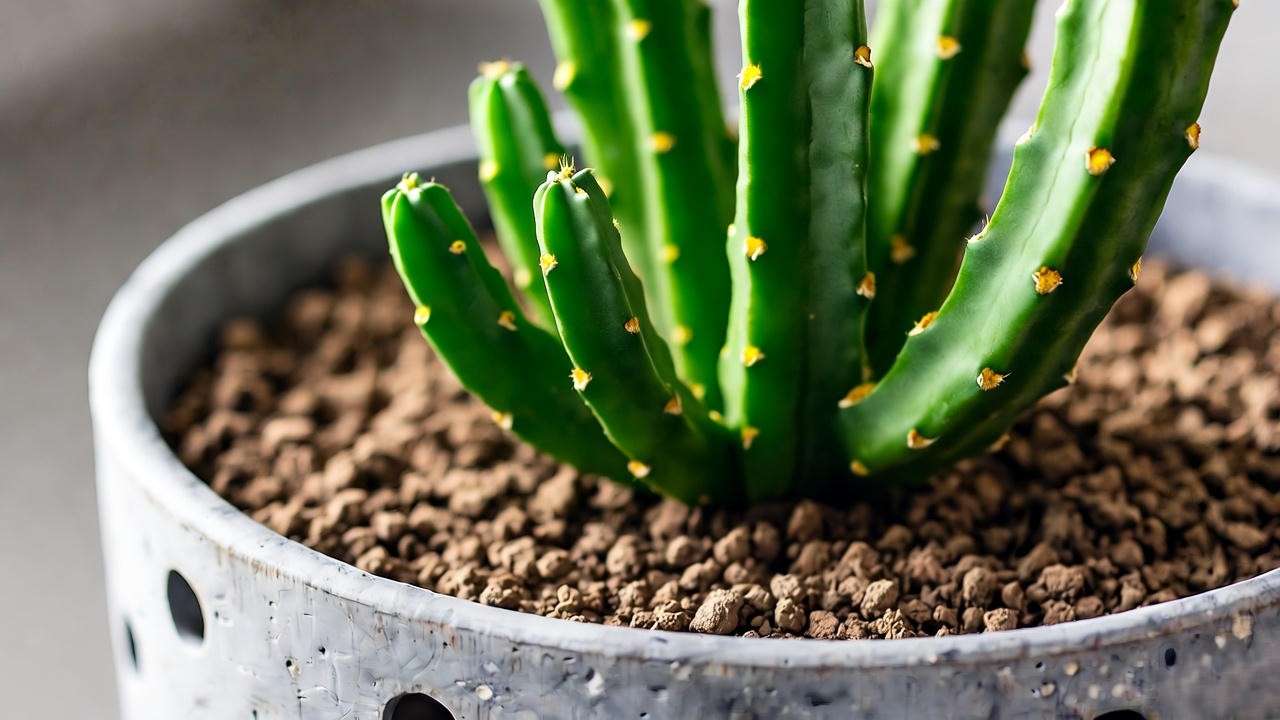
2.4. Temperature and Humidity 🌡️
Pencil cacti prefer warm conditions, thriving between 65–85°F (18–29°C). They’re sensitive to cold, so keep them above 50°F (10°C) and protect them from frost. Low humidity is ideal, making them perfect for dry indoor environments—no misting required!
Quick Reference Table:
| Care Aspect | Ideal Conditions |
|---|---|
| Light | 6+ hours bright, indirect sunlight |
| Water | Every 2–3 weeks, fully dry soil |
| Soil | Well-draining cactus mix |
| Temperature | 65–85°F (18–29°C) |
| Humidity | Low, no misting needed |
3. Common Mistakes to Avoid with Pencil Cactus Care 🚫
3.1. Overwatering Woes
Overwatering is a rookie mistake that can doom your pencil cactus. Symptoms include yellowing or mushy stems and a soft base. To fix this, stop watering immediately, check for root rot, and repot in fresh, dry soil if needed.
Solution: Adjust your watering schedule and ensure proper drainage. If in doubt, underwater rather than overwater.
3.2. Improper Light Exposure
Insufficient light causes leggy, pale growth, while excessive direct sun in extreme climates can scorch the plant. Relocate your cactus to a brighter spot if it’s stretching, or provide shade during intense heatwaves.
Personal Anecdote: Early in my plant journey, I placed a pencil cactus in a dim corner, only to watch it stretch desperately for light. Moving it to a sunny windowsill revived its vibrant green hue within weeks!
3.3. Handling Toxic Sap ⚠️
The pencil cactus’s milky sap is toxic and can irritate skin, eyes, or mucous membranes. It’s also harmful if ingested, so keep it away from pets and children. Always wear gloves when pruning or propagating, and wash tools thoroughly afterward.
Safety Tip: If sap gets on your skin, rinse immediately with soap and water. Seek medical attention for eye exposure or ingestion.
4. How to Propagate Your Pencil Cactus 🌱
4.1. Propagation Methods
Propagating a pencil cactus is simple and rewarding, with stem cuttings being the most effective method. Here’s a step-by-step guide:
- Select a Healthy Stem: Choose a 4–6 inch stem that’s green and firm.
- Cut Safely: Use a sharp, sterilized knife and wear gloves to avoid sap.
- Callous the Cutting: Let the cut end dry for 3–7 days in a shaded, dry spot.
- Plant: Place the calloused cutting in well-draining soil and water sparingly.
- Wait for Roots: Roots typically form in 2–4 weeks with minimal watering.
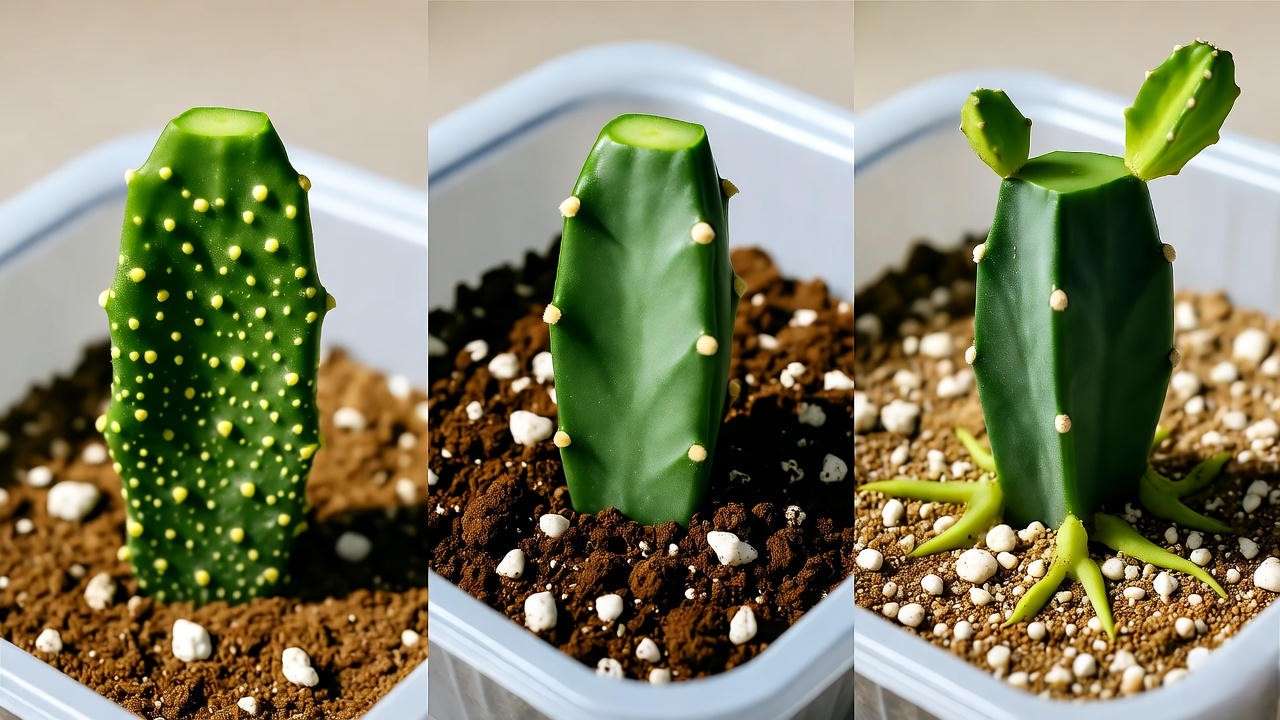
4.2. Tips for Success
- Best Time: Propagate in spring or early summer for optimal growth.
- Avoid Overwatering: Water only when the soil is dry to prevent rot.
- Patience Pays Off: Don’t disturb the cutting while roots develop.
Visual Aid Idea: An infographic showing the propagation steps can make this process crystal clear for beginners.
5. Pruning and Shaping Your Pencil Cactus ✂️
5.1. When and Why to Prune
Pruning your pencil cactus plant promotes healthy growth, controls its size, and enhances its aesthetic appeal. Regular pruning removes dead or damaged stems and encourages a bushier, more compact shape. It’s also essential for maintaining a manageable size indoors, as these plants can grow tall over time. Prune in spring or early summer when the plant is actively growing for the best results.
Reasons to Prune:
- Remove leggy or damaged stems to improve appearance.
- Control height for indoor spaces.
- Stimulate branching for a fuller look.
5.2. Safe Pruning Techniques
Due to the pencil cactus’s toxic sap, pruning requires caution:
- Wear Protective Gear: Use gloves and safety glasses to avoid sap contact.
- Use Sterilized Tools: Clean your pruning shears with rubbing alcohol to prevent disease spread.
- Make Clean Cuts: Trim stems at a 45-degree angle just above a node for healthy regrowth.
- Dispose Safely: Place cuttings in a sealed bag to keep sap away from pets, children, or other plants.
Pro Tip: After pruning, rinse tools thoroughly and wash any exposed skin to avoid irritation. For a visual guide, consider watching a pruning tutorial on a reputable plant care YouTube channel like Garden Answer.
6. Troubleshooting Common Pencil Cactus Problems 🩺
6.1. Pests and Diseases
While pencil cacti are relatively pest-resistant, they can occasionally attract common succulent pests like spider mites and mealybugs.
Common Pests:
- Spider Mites: Look for fine webbing or speckled leaves. Treat with neem oil or insecticidal soap, applied weekly until cleared.
- Mealybugs: White, cottony masses on stems. Remove with a cotton swab dipped in alcohol, then spray with neem oil.
Disease Prevention:
- Avoid overwatering to prevent root rot, a common issue in poorly drained soil.
- Ensure good air circulation by spacing plants appropriately, especially indoors.
Expert Insight: A 2023 study from the University of Arizona’s Cooperative Extension notes that proper drainage and regular inspection can reduce succulent pest issues by up to 80%.
6.2. Environmental Stress
Environmental factors can stress your pencil cactus, leading to visible symptoms:
- Dropping Stems: Sudden temperature drops or drafts can cause stems to fall. Move the plant to a stable, warm location.
- Color Changes: Red or orange hues are normal in bright light, signaling a healthy plant. Pale or green stems in low light indicate a need for more sun.
- Wilting: Often caused by underwatering or root issues. Check soil moisture and roots for rot.
Solution: Adjust light, temperature, or watering based on the symptoms. For example, if your plant is pale, gradually increase light exposure over a week to avoid shock.
7. Styling and Displaying Your Pencil Cactus 🏡
7.1. Indoor Decor Ideas
The pencil cactus’s unique, sculptural form makes it a standout in home decor. Here are some styling tips:
- Minimalist Pots: Pair with sleek ceramic or terracotta pots in neutral tones for a modern look.
- Succulent Arrangements: Group with other succulents like echeveria or haworthia for a dynamic display.
- Shelf Focal Point: Place on a high shelf to highlight its vertical growth and prevent access by pets or kids.
Inspiration: A pencil cactus in a white ceramic pot on a sunny windowsill can transform a room into a chic, desert-inspired space.
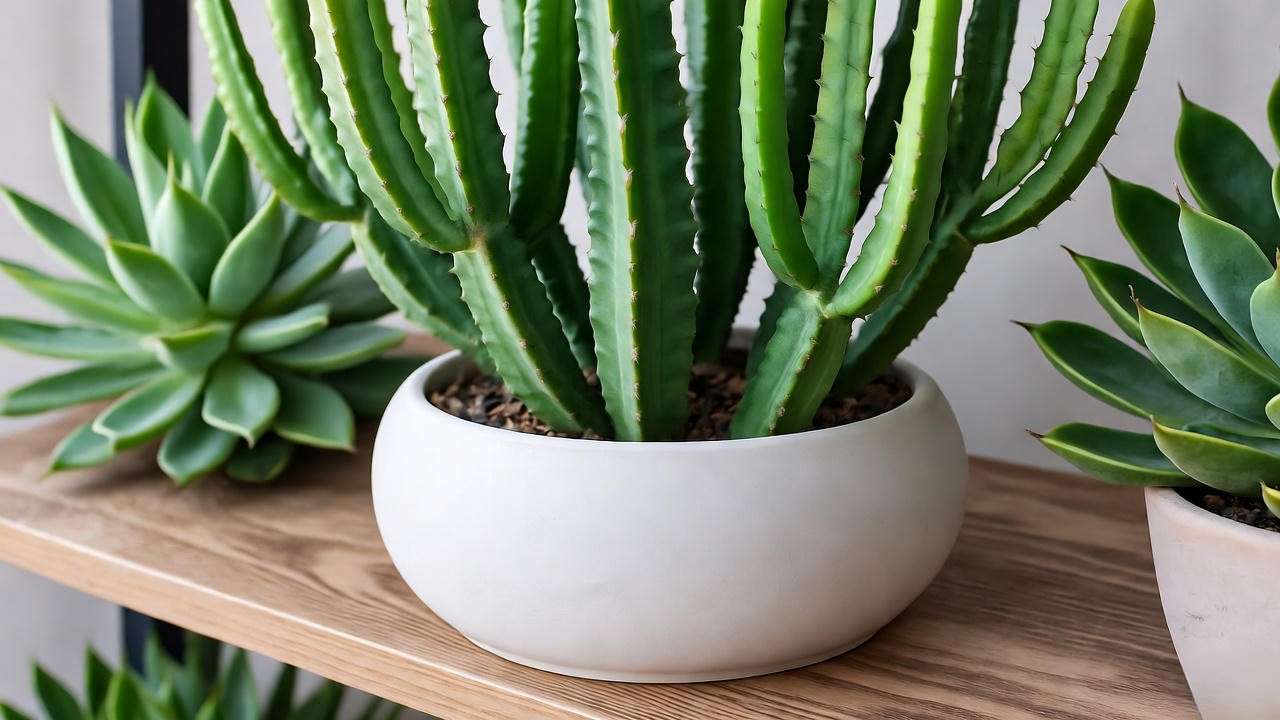
7.2. Outdoor Landscaping
In warm climates (USDA zones 9–11), pencil cacti shine in outdoor settings:
- Xeriscaping: Use in drought-tolerant gardens alongside agave, aloe, or yucca for a low-maintenance landscape.
- Container Gardens: Plant in large pots for patios or balconies, ensuring drainage.
- Companion Plants: Pair with colorful succulents or cacti to create a vibrant desert aesthetic.
Visual Idea: Include a photo gallery of pencil cactus displays, showcasing both indoor and outdoor setups with captions describing pot types and companion plants.
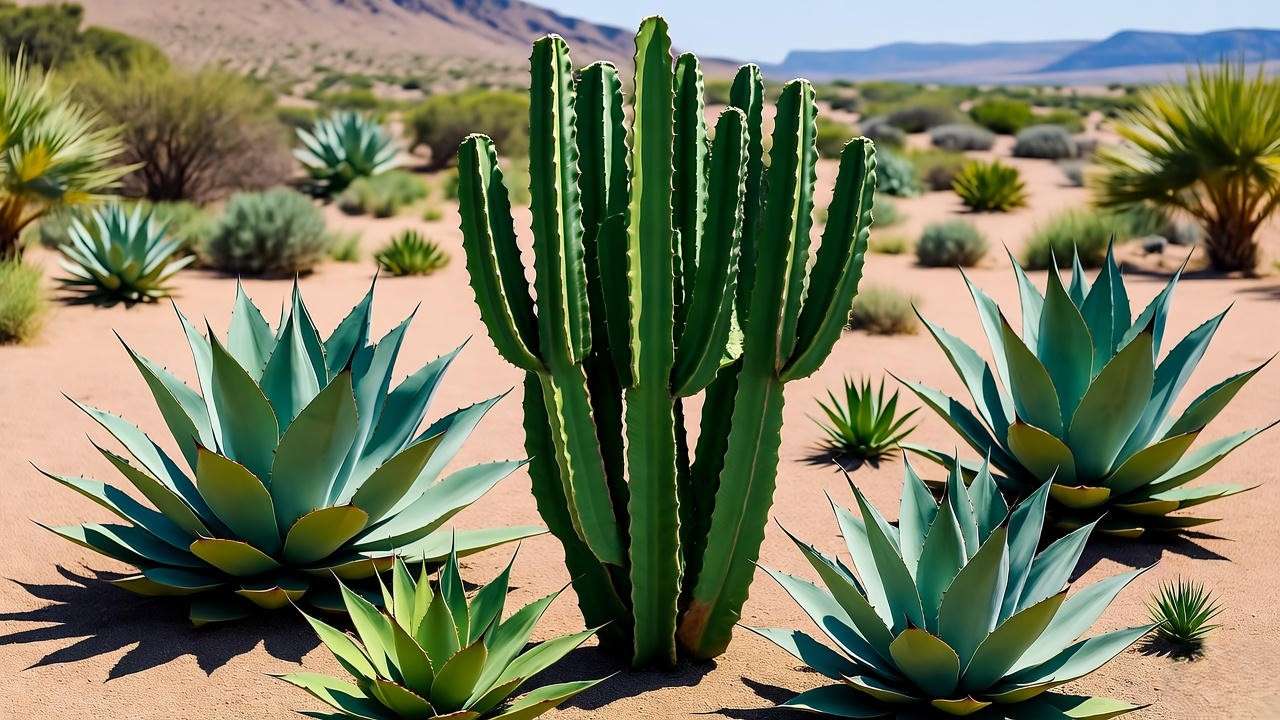
8. Frequently Asked Questions (FAQs) ❓
Q1: Is the pencil cactus safe for pets?
No, the pencil cactus is toxic due to its milky sap, which can cause irritation or illness if ingested. Keep it out of reach of pets and children.
Q2: Why is my pencil cactus turning red?
Red or orange hues are a healthy response to bright sunlight, especially in cooler months. It’s a sign your plant is happy, not stressed.
Q3: How fast does a pencil cactus grow?
Pencil cacti grow slowly to moderately, reaching up to 6 feet indoors over several years with proper care. Outdoor plants in ideal conditions may grow faster.
Q4: Can I grow a pencil cactus in low light?
Low light isn’t ideal. Pencil cacti need bright, indirect light to thrive. In low-light conditions, they may stretch or lose vibrancy. Consider a grow light for dim spaces.
SEO Note: These FAQs target long-tail keywords like “is pencil cactus toxic to pets” and “why is my pencil cactus turning red,” boosting search visibility for specific queries.
9. Expert Tips for Long-Term Success 🌟
To ensure your pencil cactus thrives for years, follow these expert tips:
- Fertilizing: Apply a diluted cactus fertilizer (e.g., 10-10-10) monthly during spring and summer. Avoid fertilizing in winter.
- Winter Care: Reduce watering to once a month and keep the plant in a warm, bright spot to mimic its natural dormancy.
- Monitoring Health: Check monthly for pests, stem health, or soil issues. Early detection prevents major problems.
- Community Engagement: Join plant care forums like Reddit’s r/succulents or share your pencil cactus photos on Instagram with hashtags like #PencilCactus or #SucculentCare to connect with other enthusiasts.
Call to Action: Share your pencil cactus care tips or photos in the comments below to inspire other plant lovers!
Conclusion 🌸
Caring for your pencil cactus plant is a rewarding journey that combines simplicity with stunning results. By providing bright light, minimal water, well-draining soil, and safe handling, you’ll enjoy a thriving succulent that elevates your space. Whether you’re propagating new plants, styling it for decor, or troubleshooting issues, this guide equips you with everything you need to succeed.
Start applying these tips today, and watch your pencil cactus flourish! Subscribe to our newsletter for more plant care guides, or explore related articles on succulent care. Have a question or success story? Drop it in the comments—we’d love to hear from you! 🌿

